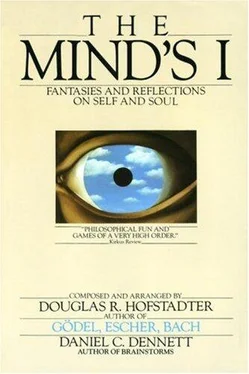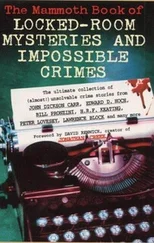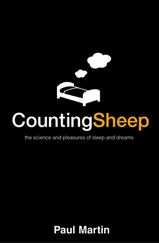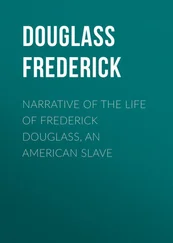Spirit is the traveler, passes now through the realm of man. We did not create spirit, do not possess it, cannot define it, are but the bearers. We take it from unmourned and forgotten forms, carry it through our span, will pass it on, enlarged or diminished, to those who follow. Spirit is the voyager, man is the vessel.
Spirit creates and spirit destroys. Creation without destruction is not possible, destruction without creation feeds on past creation, reduces form to matter, tends toward stillness. Spirit creates more than it destroys (though not in every season, nor even every age, hence those meanderings, those turnings back, wherein the longing of matter for stillness triumphs in destruction) and this preponderance of creation makes for the overall steadiness of course.
From primal mist of matter to spiraled galaxies and clockwork solar systems, from molten rock to an earth of air and land and water, from heaviness to lightness to life, sensation to perception, memory to consciousness—man now holds a mirror, spirit sees itself. Within the river currents turn back, eddies whirl. The river itself falters, disappears, emerges, moves on. The general course is the growth of form, increasing awareness, matter to mind consciousness. The harmony of man and nature is to be found in continuing this journey along its ancient course toward greater freedom and awareness.
In these poetic passages, psychiatrist Allen Wheelis portrays the eerie disorienting view that modern science has given us of our place in the scheme of things. Many scientists, not to mention humanists, find this a very difficult view to swallow and look for some kind of spiritual essence, perhaps intangible, that would distinguish living beings, particularly humans, from the inanimate rest of the universe. How does anima come from atoms?
Wheelis’s concept of “spirit” is not that sort of essence. It is a way of describing the seemingly purposeful path of evolution as if there were one guiding force behind it. If there is, it is that which Richard Dawkins in the powerful selection that follows so clearly states: survival of stable replicators. In his preface Dawkins candidly writes: “We are survival machines—robot vehicles blindly programmed to preserve the selfish molecules known to us as genes. This is a truth which still fills me with astonishment. Though I have known it for years, I never seem to get fully used to it. One of my hopes is that I may have some success in astonishing others.”
D.R.H.
10
Richard Dawkins
Selfish Genes And Selfish Memes [13] Excerpt from The Selfish Gene by Richard Dawkins. Copyright © Oxford University Press 1976. Reprinted by permission of Oxford University Press.
Selfish Genes
In the beginning was simplicity. It is difficult enough explaining how even a simple universe began. I take it as agreed that it would be even harder to explain the sudden springing up, fully armed, of complex order-life, or a being capable of creating life. Darwin’s theory of evolution by natural selection is satisfying because it shows us a way in which simplicity could change into complexity, how unordered atoms could group themselves into ever more complex patterns until they ended up manufacturing people. Darwin provides a solution, the only feasible one so far suggested, to the deep problem of our existence. I will try to explain the great theory in a more general way than is customary, beginning with the time before evolution itself began.
Darwin’s ‘survival of the fittest’ is really a special case of a more general law of survival of the stable. The universe is populated by stable things. A stable thing is a collection of atoms which is permanent enough or common enough to deserve a name. It may be a unique collection of atoms, such as the Matterhorn, which lasts long enough to be worth naming. Or it may be a class of entities, such as rain drops, which come into existence at a sufficiently high rate to deserve a collective name, even if any one of them is short-lived. The things which we see around us, and which we think of as needing explanation—rocks, galaxies, ocean waves—are all, to a greater or lesser extent, stable patterns of atoms. Soap bubbles tend to be spherical because this is a stable configuration for thin films filled with gas. In a spacecraft, water is also stable in spherical globules, but on earth, where there is gravity, the stable surface for standing water is flat and horizontal. Salt crystals tend to be cubes because this is a stable way of packing sodium and chloride ions together. In the sun the simplest atoms of all, hydrogen atoms, are fusing to form helium atoms, because in the conditions which prevail there the helium configuration is more stable. Other even more complex atoms are being formed in stars all over the universe, and were formed in the “big bang” which, according to the prevailing theory, initiated the universe. This is originally where the elements on our world came from.
Sometimes when atoms meet they link up together in chemical reaction to form molecules, which may be more or less stable. Such molecules can be very large. A crystal such as a diamond can be regarded as a single molecule, a proverbially stable one in this case, but also a very simple one since its internal atomic structure is endlessly repeated. In modern living organisms there are other large molecules which are highly complex, and their complexity shows itself on several levels. The hemoglobin of our blood is a typical protein molecule. It is built up from chains of smaller molecules, amino acids, each containing a few dozen atoms arranged in a precise pattern. In the hemoglobin molecule there are 574 amino acid molecules. These are arranged in four chains, which twist around each other to form a globular three-dimensional structure of bewildering complexity. A model of a hemoglobin molecule looks rather like a dense thornbush. But unlike a real thornbush it is not a haphazard approximate pattern but a definite invariant structure, identically repeated, with not a twig nor a twist out of place, over six thousand million million million times in an average human body. The precise thornbush shape of a protein molecule such as hemoglobin is stable in the sense that two chains consisting of the same sequences of amino acids will tend, like two springs, to come to rest in exactly the same three-dimensional coiled pattern. Hemoglobin thornbushes are springing into their “preferred” shape in your body at a rate of about four hundred million million per second, and others are being destroyed at the same rate.
Hemoglobin is a modern molecule, used to illustrate the principle that atoms tend to fall into stable patterns. The point that is relevant here is that, before the coming of life on earth, some rudimentary evolution of molecules could have occurred by ordinary processes of physics and chemistry. There is no need to think of design or purpose or directedness. If a group of atoms in the presence of energy falls into a stable pattern it will tend to stay that way. The earliest form of natural selection was simply a selection of stable forms and a rejection of unstable ones. There is no mystery about this. It had to happen by definition.
From this, of course, it does not follow that you can explain the existence of entities as complex as man by exactly the same principles on their own. It is no good taking the right number of atoms and shaking them together with some external energy till they happen to fall into the right pattern, and out drops Adam! You may make a molecule consisting of a few dozen atoms like that, but a man consists of over a thousand million million million million atoms. To try to make a man, you would have to work at your biochemical cocktail-shaker for a period so long that the entire age of the universe would seem like an eye-blink, and even then you would not succeed. This is where Darwin’s theory, in its most general form, comes to the rescue. Darwin’s theory takes over from where the story of the slow building up of molecules leaves off.
Читать дальше











